Praise for The Activation Imperative
The Activation Imperative takes marketing strategy to a new level, demanding more from marketing and marketers. Rosen and Minsky bring cohesion, structure, and direction to an increasingly fragmented marketing environment. They show how to weave digital and traditional channels together to build powerful and cost-effective marketing campaigns. A thoughtful book, and a must-read.
Kevin Tynan, author of Exposure: How to Market So Your Message Is Unavoidable and senior vice president of marketing, Liberty Bank for Savings
The Activation Imperative
How to Build Brands and Business by Inspiring Action
William Rosen and Laurence Minsky
Rowman & Littlefield
Lanham Boulder New York London
Published by Rowman & Littlefield
A wholly owned subsidiary of The Rowman & Littlefield Publishing Group, Inc.
4501 Forbes Boulevard, Suite 200, Lanham, Maryland 20706
www.rowman.com
Unit A, Whitacre Mews, 26-34 Stannary Street, London SE11 4AB, United Kingdom
Copyright 2017 by William Rosen and Laurence Minsky
All rights reserved . No part of this book may be reproduced in any form or by any electronic or mechanical means, including information storage and retrieval systems, without written permission from the publisher, except by a reviewer who may quote passages in a review.
British Library Cataloguing in Publication Information Available
Library of Congress Cataloging-in-Publication Data Available
ISBN 978-1-4422-5704-7 (cloth : alk.paper)
ISBN 978-1-4422-5705-4 (pbk. : alk. paper)
 The paper used in this publication meets the minimum requirements of American National Standard for Information SciencesPermanence of Paper for Printed Library Materials, ANSI/NISO Z39.48-1992.
The paper used in this publication meets the minimum requirements of American National Standard for Information SciencesPermanence of Paper for Printed Library Materials, ANSI/NISO Z39.48-1992.
Printed in the United States of America
To Carole, Hayden, and Ariyel,
whose love and support make everything possible.
W. R.
To the memories of Stephen R. Cartozian and James Lucas
each a friend, mentor, and
unrelenting marketing innovator
L. M.
Acknowledgments
Special thanks to David Aron, Jane Berliss-Vincent, Adam Brown, Matt Carlson, Courtney Cashman, Nicholas Cavet, Heidi Clyde, Colleen Fahey, Stevie Fitzgerald, Edna Guerra, Dr. Charles Hammerslough, Carli Hansen, Julie Harris, Patrick Herron, Brian Hodes, David Houle, Rodrigo Hurtado, Andrea O. Kendrick, Kwang-Ku Kim, Hannah Kinisky, James Lucas, Erin Lynch, Suzanne McBride, Suzanne McGee, Alton Miller, Ann Marie Mitchell, Margaret Murphy, Patrick Palmer, Alden Perkins, Rachel Ready, Christopher Richert, Raymond P. Schmitz Jr., Craig Sigele, Leanne Silverman, Karie Simpson, Sarah Stanton, Claudia Strauss, Leonard Strazewski, Rory Sutherland, Carol Timberlake, Sarah Vonderhaar, Morgan Waller, Stanley Wearden, Natalie Wilkinson, Pam Workman, and, of course, our families, the blind peer reviewers (whom we will never meet, but who helped to shape the content in ways they will never know through their feedback on our proposal and manuscript), and the baristas who kept us caffeinated.
Foreword
Rory Sutherland, Vice Chairman, Ogilvy & Mather Group UK
Because the purpose of business is to create a customer, the business enterprise has twoand only twobasic functions: marketing and innovation. Marketing and innovation produce results; all the rest are costs.
Its a famous quotation. But I think Peter Drucker here misses one important final conceptual leap. Which is that, when you define them properly, marketing and innovation are often the same thing. Or, at the very least, two sides of the same coin.
Economic value is very largely created by innovation: when people newly discover the means to do desirable and worthwhile things that they previously could not do.
But changing habits and norms of behavior is as much a marketing challenge as it is a technological one. At the very simplest level, there is no point in building a new road or railway line if no one knows of its existence. But similarly there is no point in creating better technologies until people have the confidence to adopt them. Plenty of good ideas have failedor been very slow to take holdbecause of psychological factors.
(I have long argued, for instance, that videoconferencing has largely failed to supplant physical travel because it was badly marketedbeing sold as a poor mans alternative to air travel rather than as a rich mans version of the phone call.)
As an Austrian, Drucker (both he and his economist father were friends with Joseph Schumpeter) knew this already. The Austrian School of Economics has always been clear that value is subjective. And hencealmost alone among economic modes of thoughtit has been very accepting of the value of marketing. As Schumpeters intellectual ancestor Ludwig von Mises remarked, There is no sensible distinction between the value created in a restaurant by the man who cooks the food and the man who sweeps the floor. He is using the floor-sweeper here as an analogy for marketing and advertising. Just as there is a value to producing the food, there is also a value to creating an environment in which the food can be enjoyed to its utmost. There is no point in producing excellent meals in a restaurant that smells of sewage, just as there is no point in creating stunning technological advances if you lack the skills to encourage people confidently to adopt them. (I worry, for instance, there are still no widely recognized brands of solar panels.)
Two years ago, Stewart Butterfield, a Silicon Valley innovator and one of the cofounders of both Flickr and Slack, made the following comment in an email to his colleagues: The best maybe the only? real, direct measure of innovation is change in human behavior. In fact, it is useful to take this way of thinking as definitional: innovation is the sum of change across the whole system, not a thing which causes a change in how people behave. No small innovation ever caused a large shift in how people spend their time and no large one has ever failed to do so.
I think Butterfield is almost certainly right here. And, seen through this lens, marketing and innovation are simply two complementary means of achieving the same end: to provide people with the technological and psychological cues through which they can satisfy new desires. Whether you achieve this by creating new products or by creating new desires (or both) is an irrelevant distinction.
As William and Laurence kindly acknowledge in this book, I have always believed that the best way to approach marketing challenges is by adopting a behavior-first approach. Start by being absolutely clear about what final behavior you wish to see, and then work backward from that point, experimenting and optimizing as you go. (In shopper marketing this approach is sometimes called Shelf-back planning.)
Starting with the end point and then working backward makes obvious sense to me. There is no point in optimizing upstream when bottlenecks or inefficiencies still persist downstream. By contrast, if you make your website conversion twice as effective, then any advertising you subsequently run will be made twice as effective as a result.
I am also a huge fan of defining success in behavioral termswhether the behavior is a sale or, in the case of social marketing, a new habit or norm.
To borrow the language of genetics, behavior is dominant; attitude is recessive. As Adam Ferrier observes below, when people adopt a behavior, their attitudes tend subsequently to fall into line; this is less true the other way round. A focus on behavior also allows you to quantify the value of successand thus decide how much to spendin a way in which intermediate metrics such as attitude and awareness dont.
But there is an even bigger reason why all marketing agencies should support behavioral metrics. And it is something we have increasingly discovered at Ogilvy & Mather since requiring that all briefs are headed by a clear behavioral objective.
Next page
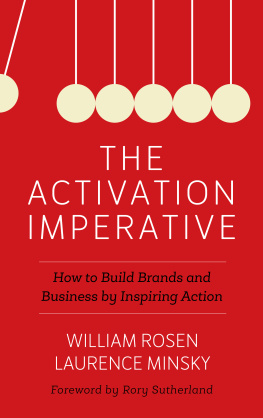
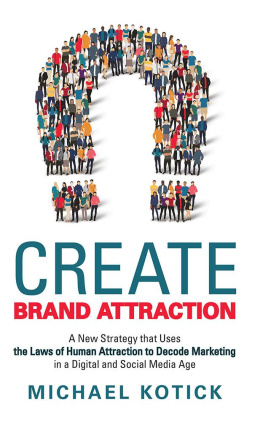
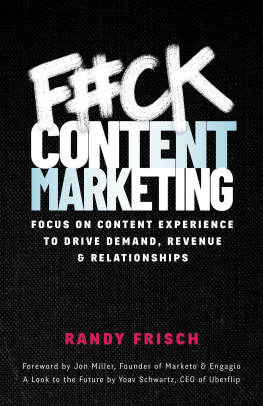

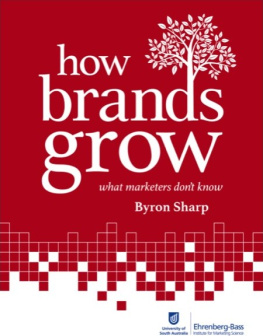

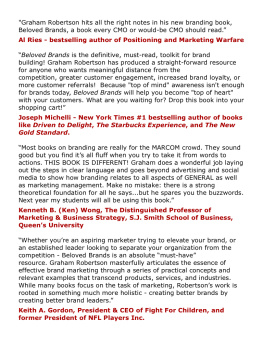



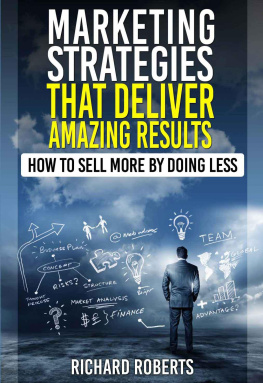
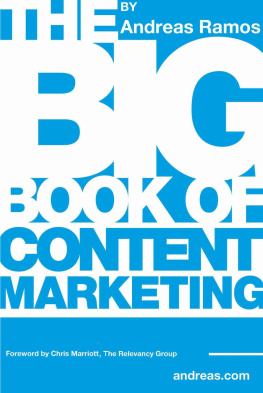
 The paper used in this publication meets the minimum requirements of American National Standard for Information SciencesPermanence of Paper for Printed Library Materials, ANSI/NISO Z39.48-1992.
The paper used in this publication meets the minimum requirements of American National Standard for Information SciencesPermanence of Paper for Printed Library Materials, ANSI/NISO Z39.48-1992.